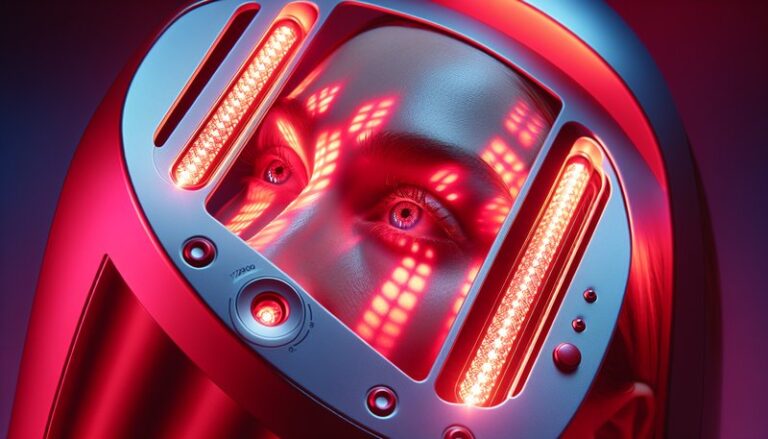Is Red Light Therapy The Same As Infrared?
Is Red Light Therapy The Same As Infrared?
Have you ever wondered whether red light therapy and infrared light therapy are interchangeable?
In this article, we will explore the similarities and differences between red light therapy and infrared therapy, elucidating their mechanisms, benefits, and applications. By the end, you’ll have a clearer understanding of whether these therapies are the same or distinct practices with unique advantages.
Key Takeaways
- Red light therapy primarily utilizes wavelengths between 600 to 700 nanometers, while infrared therapy uses longer wavelengths from 700 nanometers to 1 millimeter.
- Both therapies have distinct benefits, including improved skin health, pain relief, and enhanced healing processes.
- Choosing the right therapy depends on your specific needs and treatment goals.
What is Red Light Therapy and Infrared Therapy?
Red light therapy (RLT) involves utilizing specific wavelengths of light, primarily in the red spectrum (approximately 600 to 700 nanometers), to promote various health benefits. It stimulates cellular function, leading to increased energy production and enhanced healing.
Infrared therapy, on the other hand, employs longer wavelengths (around 700 nanometers to 1 millimeter) that penetrate deeper into body tissues. This can result in deeper healing effects, making infrared therapy particularly useful for pain relief and enhanced circulation.
Understanding the Spectrum:
- Red Light Therapy: Focuses on the visible red light spectrum, beneficial for skin health, rejuvenation, and superficial tissue healing.
- Infrared Light Therapy: Targets deeper tissues, providing relief from inflammation, muscle soreness, and joint pain.
These distinctions are crucial when deciding which therapy best aligns with your health objectives.
What are the Benefits of Red Light and Infrared Therapy?
Both red and infrared therapies offer a range of benefits, but they serve different purposes.
Improved Skin Health
Red light therapy is renowned for its ability to improve skin tone and texture by stimulating collagen production. Studies suggest that RLT can help reduce acne scars, fine lines, and wrinkles, giving skin an overall youthful appearance.
Pain Relief and Muscle Recovery
Infrared therapy is highly effective for pain management. By penetrating deeper into muscle tissues, infrared light delivers soothing relief from pain associated with conditions like arthritis and fibromyalgia.
Enhanced Healing Processes
Both therapies promote cellular repair; however, infrared therapy may accelerate healing for deeper injuries, such as muscle tears or joint damage, due to its ability to reach deeper tissues.
Increased Circulation
Infrared light therapy helps improve circulation by dilating blood vessels, potentially accelerating the healing process and reducing inflammation in injured areas.
Mood Enhancement
Some studies indicate that both therapies can enhance mood and alleviate symptoms of depression and anxiety. This effect may be due to improved blood flow combined with cellular regeneration.
Is it Possible to Combine Red and Infrared Light Therapy?
Yes, combining red and infrared therapies is not only possible but also encouraged for enhanced benefits. Many modern devices incorporate both wavelengths to provide a comprehensive treatment experience.
What are the Advantages of Combining Therapies?
Utilizing both therapies can maximize benefits by addressing a broader range of health concerns.
- Comprehensive Healing: Best of both worlds by treating superficial and deeper tissues simultaneously.
- Enhanced Recovery: Speeds up recovery times for athletes through improved blood flow and cellular rejuvenation.
- Versatile Applications: Effective for a wide range of conditions, from skin issues to chronic pain.
What are the Disadvantages of Combining Therapies?
While the combination of therapies is beneficial, some potential drawbacks include:
- Cost: Devices that offer both therapies can be more expensive.
- Overheating: Care must be taken with prolonged exposure to avoid thermal discomfort, particularly with infrared.
- Complexity: Navigating the settings and understanding which wavelengths to use may be overwhelming for some users.
What are the Things to Consider Before Starting Therapy?
Before beginning red or infrared light therapy, several important considerations should be addressed.
Treatment Goals
Identify your primary objectives: Are you focusing on skin health, pain relief, or recovery from an injury? This determination will guide your choice of therapy.
Device Quality
Select high-quality devices that utilize appropriate wavelengths for therapeutic purposes. Not all red or infrared lights are created equal; ensure that you choose FDA-cleared products.
Frequency of Use
Consider how often you plan to use the therapy. Some benefits are achieved with regular use over time, while others may require only a few sessions.
What are the Alternatives to Light Therapy?
While red and infrared light therapy possess numerous benefits, other options are available for similar health challenges.
Laser Therapy
Laser therapy uses focused light to penetrate tissues and stimulate healing. This method is often stronger and can provide more targeted treatments than general light therapy.
Ultrasound Treatment
Ultrasound therapy utilizes sound waves for deep tissue healing. This can alleviate pain and promote recovery, particularly after soft tissue injuries.
Cryotherapy
Cryotherapy involves exposing the body to extremely cold temperatures to reduce inflammation and pain. This method is popular among athletes for muscle recovery.
Massage Therapy
Massage therapy helps improve circulation, reduce pain, and promote relaxation. It serves as a complementary treatment alongside light therapy for holistic wellness.
Conclusion: Is it Recommended to Use Red or Infrared Light Therapy?
In summary, while red light therapy and infrared therapy serve different purposes and utilize distinct wavelengths, both can be highly effective for specific conditions. Whether targeting skin rejuvenation or deeper tissue healing, the selection of therapy should align with your specific health goals. Consulting with a healthcare professional can provide guidance on the best therapy for your needs.
Frequently Asked Questions
Are red and infrared light therapy safe to use?
Both therapies are generally considered safe when used properly. However, individuals with specific conditions like skin sensitivity should consult a professional first.
How long should I use these therapies for maximum benefit?
Treatment duration can vary, but most recommendations suggest sessions lasting between 10 to 30 minutes, several times a week, for optimal results.
Can I use red and infrared light therapy at home?
Yes, many devices are designed for home use, providing convenience and flexibility. Just ensure that you buy reputable products.
Discover the story in Can Red Light Therapy Shrink Breasts?
Will I see instant results with light therapy?
While many users report immediate effects such as increased relaxation or pain relief, significant changes can take weeks of consistent treatments.
Check out the details in Can Red Light Therapy Help Poison Ivy?
Are there any side effects to be aware of?
Mild side effects may include skin irritation or heat discomfort. Following usage instructions can help minimize these risks.






